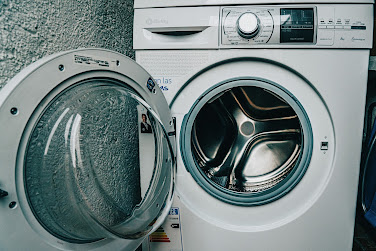The appliances in your home will generally serve you for a period of years and, in the fullness of time, it’s reasonable to expect that you will replace or upgrade what you have. However, it’s not cheap to replace an appliance, and sometimes it’s not necessary. Most of us, when the washing machine stops draining or the fridge stops keeping things as cold as it should, have the same conversation: should we hire an Appliance Repair professional, or should we order a replacement? And sometimes, the price difference between the two is so negligible that it makes sense to do the latter.
However, there is a further alternative, and it is one that can save some money compared to the other two options. On occasion, it will be possible to make a repair yourself, even if you’re not that great with
However, there is a further alternative, and it is one that can save some money compared to the other two options. On occasion, it will be possible to make a repair yourself, even if you’re not that great with tech. All you need is the right tools, the right parts and the instructions necessary to make a safe, secure and lasting repair.
However, there is a further alternative, and it is one that can save some money compared to the other two options. On occasion, it will be possible to make a repair yourself, even if you’re not that great with tech. All you need is the right tools, the right parts and the instructions necessary to make a safe, secure and lasting repair.
Diagnosing the issue
Most of us, when calling out a repair expert, won’t go into detail regarding what the issue is. We’re not best positioned to know what’s causing the fault - we just explain what the appliance isn’t doing when it normally does. However, a quick Google can help a great deal: if you search for terms like “Washer won’t complete cycle door stays locked”, or “extractor fan making noise not working properly”, you’ll tend to find information that helps you diagnose the fault. It will usually also advise you whether this needs to be professionally repaired. It may be that you simply need to remove a very basic clog, which takes minutes.
Get equipped
There are countless repair guides out there for the basic appliance faults, and in each of them it will set out what you’ll need to attempt a repair. If your dryer isn’t spinning and the clothes are just sitting in the drum, it’s probably a belt issue, so you’ll find a replacement belt for your dryer available here and are likely to need a screwdriver and some pliers. Make sure you have the right kind of screwdriver - it’s usually a good idea to buy a decent screwdriver set ahead of time, because different jobs require different sizes and heads. It’s also smart to take photos at each new stage of the repair, as this will help with the reassembly after fixing the damaged part.
Take every safety precaution you can
Before repairing any appliance, the first thing to do is disconnect it from the mains. Even if the fault isn’t anything to do with wiring or live electricity, you simply don’t play with an appliance until it is disconnected. As well as that, make sure that you are wearing appropriate safety PPE such as goggles or gloves if needed. In the case of a dryer or washer, make sure that the appliance is drained of all water before beginning to work on it, and in the case of any appliance that heats up, make sure it is fully cooled. Don’t try to work on an appliance that is held off the ground - move it to a flat surface to work on it, and remember that you need to be able to stand or kneel over it to work safely.
These are the basics you need to know before seeking to repair an appliance that has become faulty. There will be plenty of specifics available for the model you own, and often plenty of videos that show you how the repair is completed step by step.

